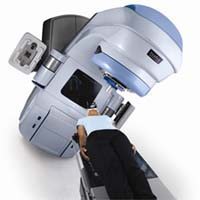Leveraging the Pleural Space for Anticancer Therapies in Pleural Mesothelioma

Malignant pleural mesothelioma is a cancer caused by asbestos. It’s deadly and spreads quickly. It usually appears 30-50 years after inhaling asbestos. Sadly, most patients survive only 18 months. Although rare, cases are growing.
In 2020, over 30,000 cases were reported worldwide. This number is expected to reach 53,000 by 2040. The rise is due to ongoing asbestos use and its presence in banned areas.
What is Pleural Mesothelioma?
The pleural space is a thin gap filled with fluid between two pleura layers. These layers line the lungs and chest wall. This space is crucial for lung function. It helps the lungs expand and contract smoothly during breathing. However, it can also be a site for diseases like fluid build-up (pleural effusion) or tumor growth (pleural mesothelioma).
Pleural mesothelioma is a cancer that starts in the pleura’s lining cells. It causes shortness of breath, chest pain, and pleural effusion. This effusion is fluid buildup in the pleural space. The disease is hard to diagnose early. Its symptoms are not specific. Also, it takes a long time to show up after asbestos exposure.
Diagnosing pleural mesothelioma includes CT scans, PET-CT scans, and thoracoscopy. Staging is crucial for treatment. Stage I, also called pleura-only, shows only pleural issues without invasion. Accurate staging can pinpoint those who could benefit from specific treatments, like intrapleural therapies.
Intrapleural Therapies
Intrapleural therapies inject anticancer drugs into the pleural space. This is ideal for early-stage pleural mesothelioma. It’s effective when the cancer is only on the pleural surfaces. This method increases drug amounts in the area, reducing side effects. Trials in the 1990s showed good responses to intrapleural immunotherapies. However, the rise of systemic chemotherapy led to less focus on this method.
Expanding intrapleural trials faces a key challenge: ensuring access to the pleural space. Methods like pleural catheters and talc pleurodesis help treat pleural effusion. However, they must be fine-tuned for intrapleural therapy. The key steps are selecting suitable patients through thorough radiological checks and educating patients and caregivers.
Moreover, new technologies are emerging. They aim to boost the effectiveness of intrapleural treatments. For example, injectable hydrogels and nanotechnology devices improve drug delivery and distribution. These innovations promise better outcomes for pleural mesothelioma patients.
The pleural space is key for treating localized cancer. It shines with pleura-only mesothelioma patients. More intrapleural trials and new tech will help. Access and patient selection challenges need tackling. Considering patient and caregiver views is crucial. This approach improves anticancer therapies.
With more pleural mesothelioma cases, innovation and proper clinical trials are a must. The pleural space, with its unique features, promises better treatment.
Source:
Blyth, Kevin G., Prasad S. Adusumilli, Philippe Astoul, Liz Darlison, Y. C. Gary Lee, Aaron S. Mansfield, Stefan J. Marciniak, et al. “Leveraging the Pleural Space for Anticancer Therapies in Pleural Mesothelioma.” The Lancet. Respiratory Medicine, May 10, 2024, S2213-2600(24)00111-5. https://doi.org/10.1016/S2213-2600(24)00111-5.





